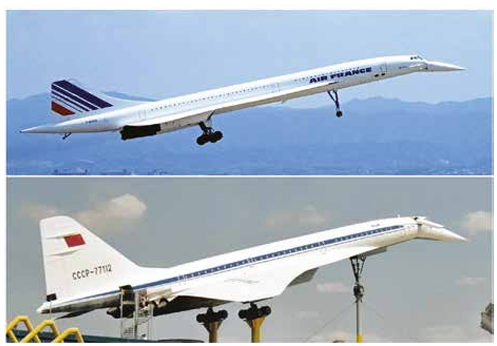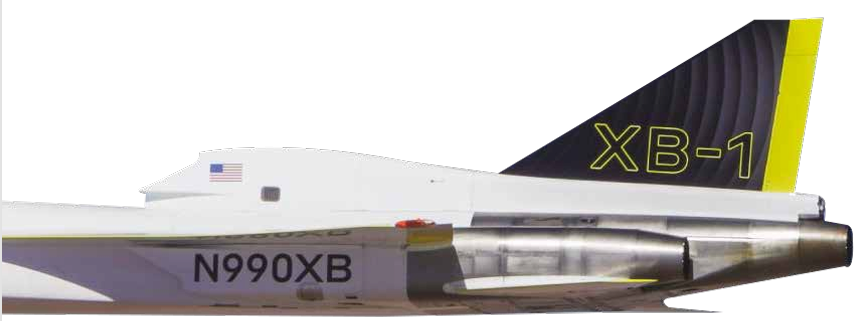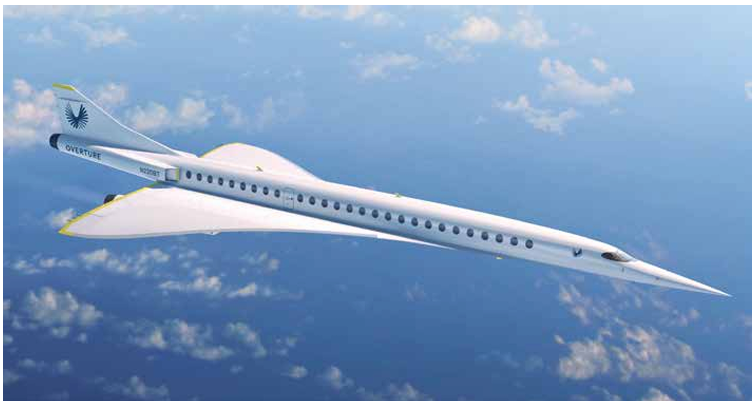
Timeless Aircraft
In our lives where time is extremely valuable, can we save time through transportation? In response to this question, a new addition was made to the supersonic aircraft that made headlines back in the 1960s. Following the legendary Concorde and its Soviet rival Tupolev TU-144, all eyes are now on the XB-1, also known as the “son of Concorde”!
Before talking about the XB-1, let’s go back to the 1960s and 1970s when the dream of supersonic passenger aircraft first emerged. During these years, the first supersonic transport aircraft to make an appearance was the Tupolev TU-144, developed by the Soviet Union. Designed under the leadership of Alexey Tupolev, this ambitious aircraft made its first test flight in March 1969. Reaching an impressive speed of 2.15 Mach (2.15 times the local speed of sound), the TU-144 attracted intense attention until the 1973 Paris Air Show, after which opinions changed tragically. During the show, the aircraft performed a successful 360-degree turn, followed by a steep climb, and then began flying at low altitude to demonstrate rapid acceleration. However, after this maneuver, the aircraft began disintegrating about 5,000 feet (1,524 meters) above the crowd, eventually crashing into a nearby village and causing major destruction. In this tragic incident, all six crew members and eight French civilians lost their lives. Following this tragedy, the TU-144’s sole airline operator, Aeroflot, temporarily used the aircraft for cargo transport in 1975 to restore confidence. By 1977, the jet began carrying passengers, but due to its inability to provide sufficient flight comfort, it was modified by Tupolev. The modified TU-144 crashed during a flight in 1978 before delivery to Aeroflot, and the project was completely terminated in 1982.



Meanwhile, in Europe, the Concorde, which also made its first flight in March 1969, was making headlines in the aviation world. This elegant jet, a British-French collaboration and the world’s second supersonic passenger aircraft, could reach speeds of up to 2.04 Mach. During the design and development process of Concorde, advanced technologies such as carbon fiber brakes and a partially fly-by-wire system were used. Lighter than the TU-144, with superior engine control and braking systems, Concorde stood out as a promising star in aviation, despite the misfortunes of its Soviet counterpart. Its successful demonstration flights, especially in Paris, showcased Concorde’s technological superiority and reliability to the world. Spectators were amazed by the elegant and powerful aircraft’s impressive maneuvers at supersonic speeds. Its rapid takeoffs, high-altitude glides, and the iconic sonic boom it created when breaking the sound barrier became unforgettable moments for aviation enthusiasts. These spectacular performances established Concorde not just as a mode of transportation but also as a symbol of engineering excellence and national prestige for both Britain and France.

Nevertheless, Concorde also faced difficulties throughout its commercial life and was finally retired in 2003. High operating costs, concerns about noise pollution, and the tragic crash in 2000 were key factors in this decision. Still, Concorde’s legacy continued to inspire aerospace engineers and entrepreneurs. It is at this point that the XB-1, referred to as the “son of Concorde,” steps onto the stage.
XB-1: A Sign of a Supersonic Renaissance?
Developed by Boom Supersonic, XB-1 stands out as a promising project that aims for the future while drawing lessons from past supersonic experiences. Making its first flight in March 2024, XB-1 is a prototype produced as a critical part of the development of Overture, a 64–80-passenger supersonic airliner. This demonstrator aircraft, which can fly with a single pilot, uses three General Electric J85 turbojet engines providing a total thrust of about 13,000 pounds and aims to reach speeds of Mach 2.2 (approximately 2,335 km/h depending on altitude). According to information on Boom’s website, the propulsion system designed for Overture will feature a symmetrically axial supersonic intake, a variable-geometry, low-noise exhaust nozzle, and a passively cooled high-pressure turbine distinct from subsonic turbofans.


Mach Cutoff Physics and Quieter Supersonic Flight:
The XB-1’s design allows it to break the sound barrier at altitudes above 30,000 feet (9,144 meters). This altitude is where the principle known as Mach cutoff physics becomes relevant. When an aircraft (or any object) exceeds the speed of sound, it generates a shockwave that moves outward and downward. However, when flying above the Mach cutoff boundary at around 30,000 feet, these shockwaves are directed upward into the atmosphere, not downward toward populated areas enabling quieter flight.
In the 1930s, aerodynamicists like Theodore von Kármán began modeling theoretical shockwave propagation and how atmospheric conditions influence sonic booms. When Chuck Yeager broke the sound barrier with the X-1 in 1947, scientists gained better opportunities to observe how sonic booms spread. By the 1960s, a solid understanding had been established about how altitude, temperature, and wind layers affected shockwave dissipation. Boom Supersonic relies heavily on these “quieter” approaches to supersonic flight in the design of both Overture and Symphony.

The Role of Technological Advancements:
If these principles were understood long ago, one might ask, “Why weren’t quieter supersonic aircraft developed earlier?” The answer lies in the lack of mature technology and efficient design tools at the time. For instance, aircraft like the Concorde relied on the high thrust of turbojet engines to reach Mach 2, making it impossible to remain within the Mach cutoff envelope. Today, with automatic flight controls, advanced atmospheric modeling, and more efficient engine designs unlike Concorde’s fuel-hungry engines that consumed hundreds of gallons per minute institutions like NASA, Lockheed Martin, and now Boom are effectively leveraging modern technology to realize quieter, faster, and more sustainable supersonic flights.
Commercial Interest and Production Preparations:
Commercial interest in the future of supersonic travel is also remarkably strong. Leading global airlines like Japan Airlines, United Airlines, and American Airlines have placed 130 firm preorders for the Overture aircraft once R&D is complete. This strong interest clearly indicates the aviation industry’s belief in the potential of supersonic travel. Boom has also started construction of the Overture Superfactory in Greensboro, North Carolina, aiming to produce up to 66 aircraft annually.

Latest News and Key Features of the XB-1:
Breaking the Sound Barrier: According to Boom Supersonic CEO Blake Scholl, XB-1 has recently passed a major milestone by becoming the first civilian jet in the U.S. to break the sound barrier. This is seen as a critical step toward reviving commercial supersonic flight.
NASA Collaboration and Sonic Boom Tests: Through collaboration with NASA, the effects of XB-1’s sonic boom are being closely studied. Using schlieren photography techniques to visualize sound waves, engineers are gaining insights into sonic boom dynamics and developing potential reduction methods. Blake Scholl’s statement, “We’ve also confirmed that XB-1 doesn’t produce an audible sonic boom,” is of great significance for allowing future supersonic aircraft to fly over populated areas.
Advanced Technology and Design: The use of carbon fiber composite materials in XB-1 reduces weight while enhancing durability. Thanks to advanced digital design and simulation tools, aerodynamic efficiency is maximized. In addition, engines compatible with sustainable aviation fuels (SAF) represent an important step toward reducing environmental impact.
Path to Overture: XB-1 serves as a critical test platform for Boom Supersonic’s commercial supersonic passenger aircraft, Overture. Data and experience gathered from XB-1 will shape Overture’s design. Overture is expected to carry more passengers and significantly reduce travel time on transatlantic routes.
Legacy of the Past, Vision for the Future:
Concorde and Tu-144 were pioneering projects that demonstrated the potential of supersonic passenger planes. However, the technical and economic challenges they faced led to the suspension of civilian supersonic flight for a time. Now, new-generation projects like XB-1 show that by learning from past mistakes, a more sustainable, economical, and environmentally friendly era of supersonic travel may indeed be possible. Boom Supersonic’s slogan, “We’re back, America!” signifies not just an achievement, but the rekindling of a dream for the future of aviation.
